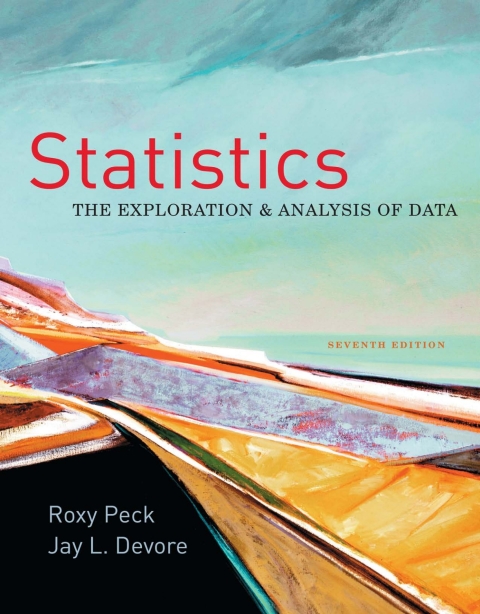The paper MRI Evaluation of the Contralateral Breast in Women with Recently Diagnosed Breast Cancer (New England
Question:
The paper “MRI Evaluation of the Contralateral Breast in Women with Recently Diagnosed Breast Cancer” (New England Journal of Medicine
[2007]: 1295–1303) describes a study of the use of MRI
(Magnetic Resonance Imaging) exams in the diagnosis of breast cancer. The purpose of the study was to determine if MRI exams do a better job than mammograms of de termining if women who have recently been diagnosed with cancer in one breast have cancer in the other breast.
The study participants were 969 women who had been diagnosed with cancer in one breast and for whom a mammogram did not detect cancer in the other breast.
These women had an MRI exam of the other breast, and 121 of those exams indicated possible cancer. After undergoing biopsies, it was determined that 30 of the 121 did in fact have cancer in the other breast, whereas 91 did not. The women were all followed for one year, and three of the women for whom the MRI exam did not indicate cancer in the other breast were subsequently diagnosed with cancer that the MRI did not detect. The accompanying table summarizes this information.
Cancer Present Cancer Not Present Total MRI Positive for Cancer 30 91 121 MRI Negative for Cancer 3 845 848 Total 33 936 969 Suppose that for women recently diagnosed with cancer in only one breast, the MRI is used to decide between the two “hypotheses”
H0: woman has cancer in the other breast Ha: woman does not have cancer in the other breast (Although these are not hypotheses about a population characteristic, this exercise illustrates the definitions of Type I and Type II errors.)
a. One possible error would be deciding that a woman who does have cancer in the other breast is cancerfree. Is this a Type I or a Type II error? Use the information in the table to approximate the probability of this type of error.
b. There is a second type of error that is possible in this setting. Describe this error and use the information in the given table to approximate the probability of this type of error.
Step by Step Answer:

Statistics The Exploration And Analysis Of Data
ISBN: 9781133171744
007th Edition
Authors: Roxy Peck, Ay L Devore






